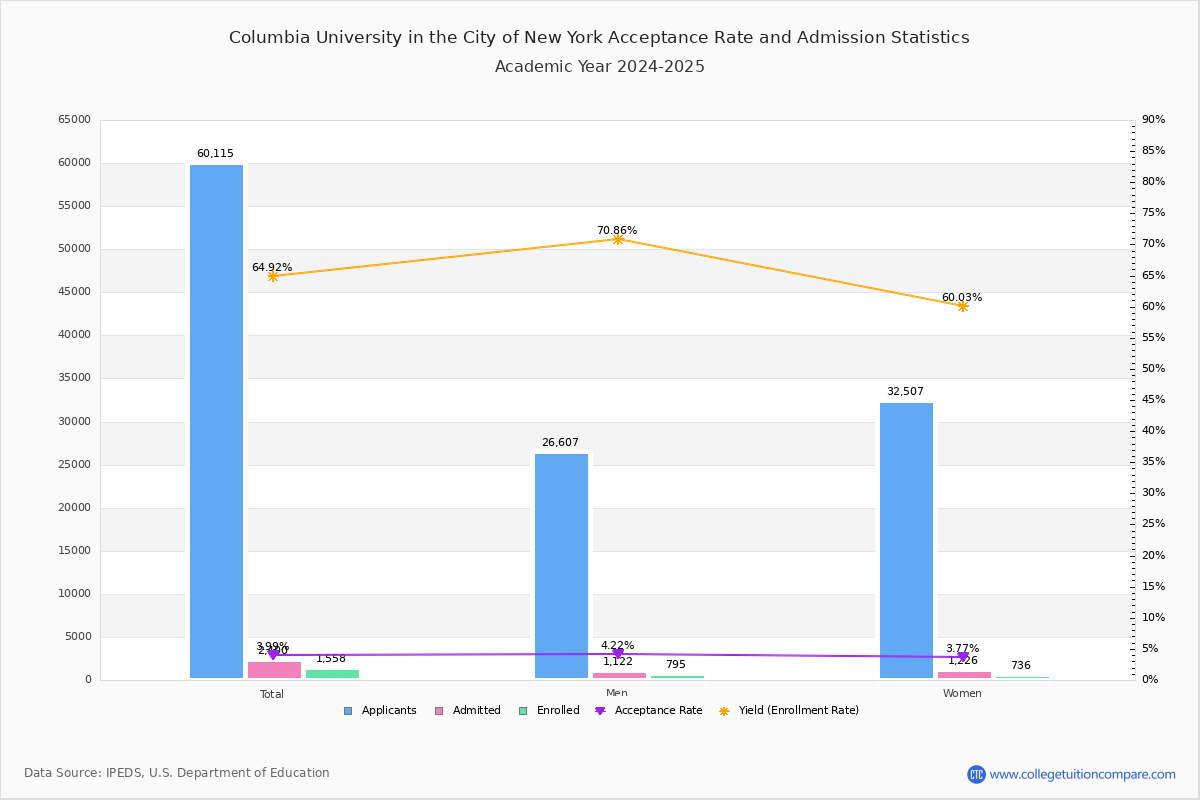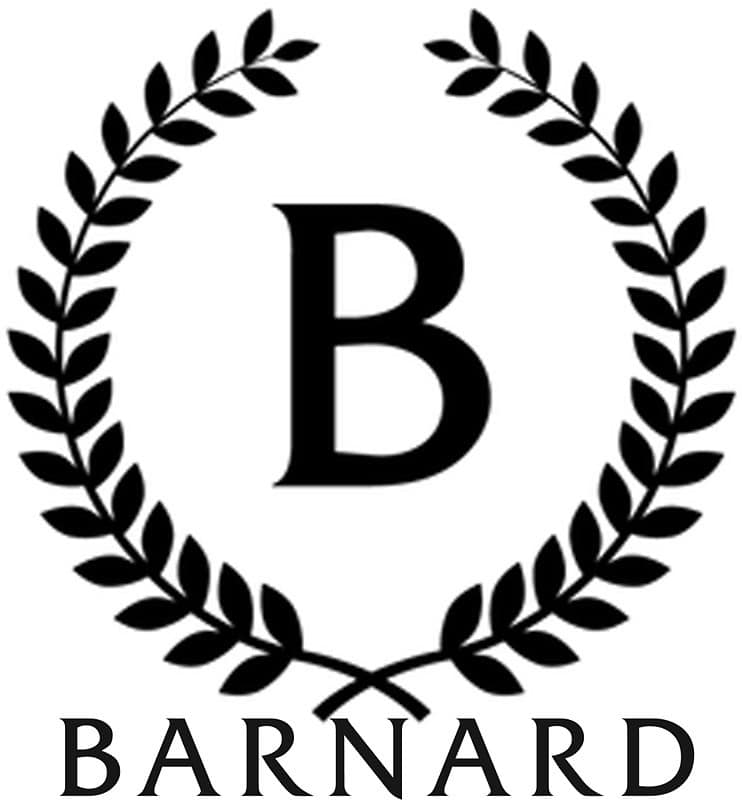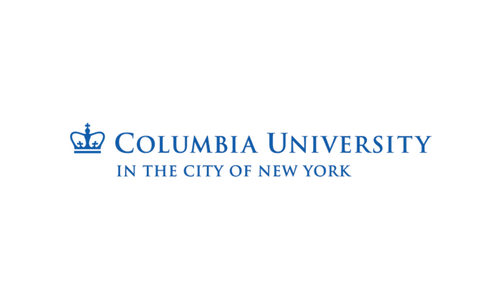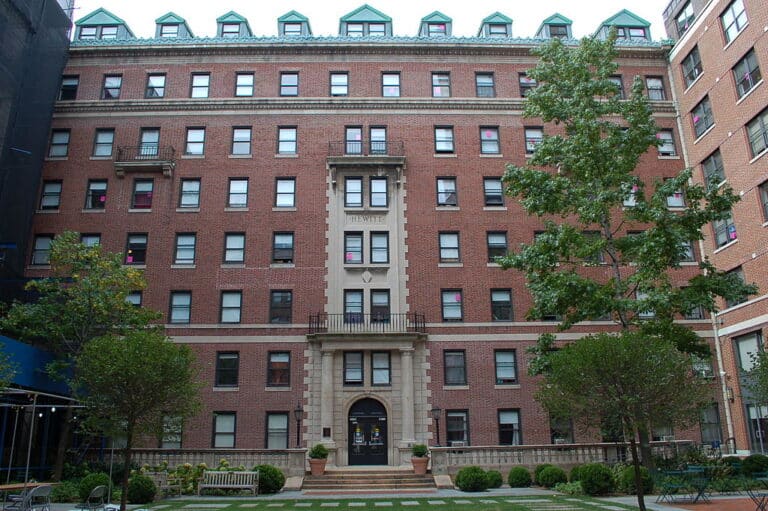Barnard is a small, highly selective liberal arts college for women located in New York City. The student body of just over 2,650 is part of a diverse and close-knit community and students study with leading scholars who serve as dedicated, accessible mentors and teachers. Founded in 1889, Barnard also engages in a unique partnership with Columbia University, situated directly across the street. Students have access to cross-registration of courses with Columbia, many joint extracurricular activities, participate in NCAA Division I Ivy League athletics and enjoy a fully coed social life.
The location in New York City grants students access to thousands of internship opportunities in addition to unparalleled cultural, intellectual and social resources. Barnard's diverse student body includes residents from nearly every state and more than 55 countries worldwide. About 40 percent of the student body identify as students of color, and 11 percent are non-US citizens or permanent residents. The Visiting International Students Program brings students from across the globe to Barnard for one spring semester in residence at our campus in New York City. Through a limited number of collaborative relationships with international universities, our partners send cohorts of 3-15 undergraduate students to Barnard to spend the spring semester as full-time visiting students. In 2007, Barnard College and Columbia University amended and extended the longstanding agreement for cooperation between the institutions, an agreement which remains unique in higher education.
Barnard stands as an independent college for women with its own curriculum, faculty, admissions standards, graduation requirements, trustees, endowment, and physical plant. At the same time, Barnard and Columbia share resources, thereby giving students open access to the courses, facilities, and libraries of both schools. Barnard and Columbia students also share in a wide variety of social and extracurricular activities. Barnard boasts 80 undergraduate clubs, and students have access to an additional 140 at Columbia. Columbia University is academically comprised of separate and individual undergraduate and graduate colleges. The three core undergraduate schools include Columbia College , the Fu Foundation School of Engineering and Applied Science, and the Columbia University School of General Studies.
In addition to this, the university also oversees Barnard College which is an all-women's liberal arts undergraduate institution. The undergraduate schools have a total enrolment of around 8000 undergraduate students. Columbia University's acceptance rate is low, and it is the second most selective university after Harvard. Barnard itself consists of just 2,500 undergraduate students, but the women there have access to the classes, facilities, resources, and extracurriculars at Columbia College in the same way the Columbia students do.
30% of the students at Barnard major in STEM, which can be a reaffirming environment for women interested in those fields. Barnard has a higher acceptance rate than Columbia (10.4% as opposed to 3.9% for the class of 2025), but that doesn't mean the school is significantly less competitive. Given the smaller applicant pool, women's colleges typically have higher acceptance rates. Founded in 1889 as a women's college when Columbia University was still an all-male institution, Barnard College is now an independent college under the Columbia umbrella. It is fully autonomous, with its own admissions process and curriculum requirements, but Barnard and Columbia students can freely take classes on each other's campuses and participate in clubs. Barnard is one of a handful of outstanding colleges exclusively for women.
The entrance standards at Barnard are very tough, but the Admissions process is definitely less competitive than Columbia's. For example, though Barnard matriculates about 550 students per year, it admits 23% of its applicants. Columbia, by contrast, only accepts about 7% of its applicants! Now once enrolled, Barnard and Columbia seemingly intersect everywhere.
Note that they do NOT share dorms, but the Freshman orientation program is completely co-mingled. So yes, I would probably recommend that a student who is in love with Columbia, but not quite qualified to be in the top 25% of the Columbia applicant pool look seriously at Barnard. They are both elite with incredible and strong alumni networks . For those who qualify (academically and 'financially) and fit , either school is a winner. Barnard College boasts a highly competitive admissions pool with a low acceptance rate and high mean SAT/ACT scores.
However, Barnard has a robust admissions process that involves a multitude of academic measures. A persuasive essay, short answer essay, and glowing recommendation letters can bolster your application, as can along with being involved with student organizations and attempting a challenging course load. Students with unique talents and accomplishments can still receive strong consideration even if their GPAs are outside of the admissions offices mean range. After applying, students will receive a message from an admissions counselor about the next steps of the application process. Interested students should check out the university's website, which has helpful tips and contact information for the admissions offices.
Founded in 1864 as the School of Mines, The Fu Foundation School of Engineering and Applied Science is the nation's third oldest engineering school. In 2019, 49% of incoming Columbia Engineering students were women. If you're interested in the engineering college, but don't want to miss out on the opportunity to take liberal arts courses at the College, you can enroll in the Columbia Combined Plan. Students from other liberal arts colleges can also apply to this program during their junior or senior year.
To apply to Columbia, you will need to use the Common Application, a centralized platform through which you can apply to most American colleges and universities. Despite the affiliation Barnard is legally and financially separate from Columbia, with an independent faculty and board of trustees. It is responsible for its own separate admissions, health, security, guidance and placement services, and has its own alumnae association. Most Columbia classes are open to Barnard students and vice versa. Barnard students and faculty are represented in the University Senate, and student clubs are open to all students.
As of 2012 Barnard pays Columbia about $5 million a year under the terms of the "interoperate relationship", which the two schools renegotiate every 15 years. Nonetheless, Barnard students participate in the academic, social, athletic and extracurricular life of the broader University community on a reciprocal basis. The affiliation permits the two schools to share some academic resources; for example, only Barnard has an urban studies department, and only Columbia has a computer science department. Barnard students and faculty are represented in the University Senate, and student organizations such as the Columbia Daily Spectator are open to all students. Barnard students play on Columbia athletics teams, and Barnard uses Columbia email, telephone and network services.
Columbia University in the City of New York, more commonly known as Columbia University, is a private Ivy League research university based in Manhattan, New York City. The university was established as King's College in 1754 after the Declaration of Independence as one of the colonial colleges. It is among the oldest institutions of higher education in the United States. Columbia has since evolved into a prominent university, known for its highly selective admissions, impressive academic standards, cutting-edge research, and international prestige. As a result, the acceptance rate at Columbia University is quite low. With a dedicated faculty of scholars distinguished in their respective fields, Barnard is a community of accessible teachers and engaged students who participate together in intellectual risk-taking and discovery.
Barnard students develop the intellectual resources to take advantage of opportunities as new fields, new ideas, and new technologies emerge. They graduate prepared to lead lives that are professionally satisfying and successful, personally fulfilling, and enriched by love of learning. Through an agreement with List College of the Jewish Theological Seminary, located just north of the campus at 122nd Street, students can apply to simultaneously earn a BA degree from Barnard and a BA at JTS.
Barnard also offers highly-talented music students the opportunity to apply for the Lesson Exchange Program with Juilliard and/or the Cross Registration Program with the Manhattan School of Music. Both programs will require a separate application and audition. The Lesson Exchange at MSM and Juilliard provide private weekly lessons with faculty. It is important to note that the Exchange does not include participation in large ensembles. Students in the Juilliard program can take classes in instrumental or vocal performance and piano composition. MSM students can take lessons for instrumental or composition only.
Barnard does also offer a multitude of music courses, major, private lessons and many performance opportunities through its own music department and at Columbia. Students are encouraged to take advantage of interdisciplinary learning through exploring more than 50 fields of study in the social sciences, humanities, natural sciences, and arts. Barnard is a community of accessible teachers and dedicated students who embark collaboratively on a journey of intellectual risk-taking and discovery.
The small, personal, and close-knit character of Barnard is augmented by Columbia's resources, allowing students to benefit from both an all-women and a coeducational experience. Barnard and Columbia students cross-register for courses and share a multitude of extra-curricular activities. While 45% were enrolled through Early Decision, only 1,097 students were admitted.
About 85% of students were in the top decile of their high school. The college is an independent institution with its own policies, but it has a partnership with Columbia University and is considered to be one of the four of its undergraduate colleges. Barnard College is a private institution situated in New York City, US. It was established in 1889 and since then the college has been providing stellar liberal arts education for women. The college offers a number of Bachelor of Arts degree programs in more than 50 areas of study. These include several undergraduate programs in education, architecture, theater, dance, as well as urban studies.
The Office of Admissions is proud to present the Barnard College Class of 2025. Each year we seek to enroll bold, engaged, and intellectually curious students into our community. We are happy to provide statistics on enrollment and financial aid to give you a broad understanding of the candidates we seek to admit to Barnard. These pieces of the application are critical to gaining a full understanding of each candidate and their fit for Barnard. During the last week of my junior year in high school, I sat down with my mentor, my English teacher Mrs. Scher, to create a list of colleges and universities to visit. This was when I learned about the Seven Sister Schools and that yes indeed, just across the street from Columbia was an all women's college.
Barnard College Part Of Columbia University She urged me to research Barnard, and as my high school called Mrs. Scher the "sorting hat" of colleges, I listened. It was the city and the campus feel, the small classes and opportunities, and of course, Millie the dancing bear mascot. When I visited, I didn't take a tour of Columbia campus, and therefore did not know how closely the two schools were connected. I only began to understand the relationship after the joint orientation program for first-years, called New Student Orientation Program .
Simply put, Barnard is institutionally independent, while academically and socially linked to Columbia. There are few freebies between the school- Barnard has to pay Columbia for access to utilities, the libraries, and other facilities such as Lerner. Columbia University does not handle admissions for Barnard, nor does it spend money on or collect money from Barnard students. Nevertheless, both student bodies typically benefit in some manner when either school spends money, as the schools tend to keep student programming open to all undergraduates, though this is not always the case. Barnard College, one of the Seven Sisters schools, was founded in 1889 ; it remains an undergraduate liberal arts school for women only.
The college was named for Columbia's 10th president, Frederick Barnard, whose campaign to have women admitted to Columbia resulted in a Collegiate Course for Women in the early 1880s. Women completing the curriculum were awarded a diploma from Columbia, but they had to pursue their courses of study independently. The program was soon abandoned, leading to the establishment of Barnard.
The college moved to its present location, across the street from Columbia in the Morningside Heights section of Manhattan, in 1898. StudyPoint is a national leader in one-to-one, in-home test prep and academic tutoring. The test-taking techniques and strategies taught in our SAT tutoring and ACT tutoring programs enable students to earn higher test scores and gain admissions to competitive colleges and universities. Our expert subject tutors and personalized lesson plans help students earn better grades and become happier, more confident students. Whether you're looking for a math tutor or any other type of academic tutoring, StudyPoint can help.
To learn about tutoring programs in your area, feel free to contact us for more information. While the resources available may be similar, Barnard College is the younger sister to Columbia and undergraduates will be exposed to different experiences. The major differences between these schools are that the admissions process is separate, there are two distinct presidents and separate teachers/administration, as well as distinct campus locations. Additionally, when you graduate from Barnard College, your degree will say Columbia University, Barnard College. Nonetheless, being at Barnard College means you will have the opportunity to be involved both in a tight-knit community of strong women and a large, resource-filled Ivy League University.
Academic organizations within and beyond the University also offer vital opportunities for research, study, studio experience, internships, and community service. Barnard's location offers its students a variety of work experiences on and off campus. 75% of Barnard students are estimated to complete an internship during their four years at the College. Columbia University, major private institution of higher education in New York, New York, U.S. It is one of the Ivy League schools. Founded in 1754 as King's College, it was renamed Columbia College when it reopened in 1784 after the American Revolution. Columbia College was the undergraduate liberal arts school for men until 1983, when women began to be admitted.
Besides Columbia College, the university includes two other undergraduate schools and the affiliated Barnard and Teachers colleges. Barnard College had received 9,411 applications but the college only admitted 1,220 applicants and had an acceptance rate of 13% for 2020. Currently college has 2,682 undergraduate students out of total students 11% are international students. Barnard has a high student retention rate, an indication of student satisfaction with the college experience. Barnard students also enjoy leaves for study, travel, and internships. By senior year, about three-quarters of students have undertaken an internship and/or pursued funded summer research across academic institutions, corporations, nonprofit organizations, government agencies, and in the arts.
Every year Barnard admits about 80 transfer students who come to take advantage of the educational opportunities available to Barnard women. Barnard College has been a distinguished leader in higher education for women for over 100 years and is today the most sought after private liberal arts college for women in the nation. Founded in 1889, the College was the first in New York City, and one of the few in the nation at the time, where women could receive the same rigorous liberal arts education available to men. Its partnership with a great research university, combined with its setting in an international city and its unwavering dedication to the advancement of women, makes Barnard unique among liberal arts colleges today.
The average SAT score of students admitted into Barnard College is 1404. On the other hand, the average ACT score of students admitted into the school is 31. The need to have high SAT or ACT scores is one of the things that make the school one of the most selective liberal arts colleges in the nation. Barnard is only the second woman's college that I have visited. If I were to compare the two, I would say that both schools take very similar approaches to developing women not only for careers and further education, but also for leadership.
Both communities have the right examples of women as leaders within their administrations, their faculty and their student bodies. They also do an excellent job at preparing women for careers in the sciences. Both practice need-blind admissions and will attempt to meet a student's full financial need. According to the Columbia website, there are no minimum standardized test scores or high school GPA required for admission. The admissions committee prides itself on taking a holistic approach and assessing a range of factors in each application. Key factors include academic record, intellectual achievements, personal experiences, and involvement in activities beyond the classroom.
It is important to ensure that your application is complete and presents your strengths and interests in a clear, concise way. As evidenced by the 99% retention rate from the first to second year, students are very happy with the University, its resources, and its location. Despite the busy urban setting, there is still an intimate sense of community among Columbia students. Nearly 95% of all undergraduates live on campus, and all students participate in the renowned Core Curriculum, a set of required classes in literature, philosophy, history, music, art, and science. The process for applying to one of Columbia's undergraduate programs changes depending on whether you're applying to Columbia College, Columbia Engineering, or Barnard College.
Columbia College and Columbia Engineering use the same application, whereas Barnard uses a separate application. Information on the Barnard application (a women's college affiliated with Columbia) can be found here. Columbia College, Columbia Engineering, and Barnard are all geared toward full-time students who are beginning college for the first time. In addition computer and information sciences and support services, visual and performing arts and social sciences are all popular academic programs.




















































